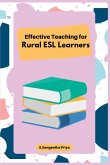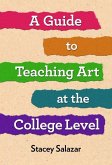Teaching diversity with cultural intelligence and mindfulness is an approach to learning about and embracing different cultures, beliefs, and perspectives that emphasizes the development of emotional and social intelligence. This approach recognizes that cultural differences can often lead to misunderstandings and conflicts, but with the right tools and understanding, individuals can learn to appreciate and learn from these differences.Cultural intelligence (CQ) is the ability to understand and navigate different cultural contexts. It includes knowledge of different cultures, awareness of one's own cultural biases, and the ability to adapt one's behavior to fit different cultural contexts. Teaching CQ involves exposing individuals to a variety of cultural perspectives and providing them with the skills and knowledge to engage with people from different cultures.Mindfulness is a practice that involves being present and non-judgmental in the moment. It is often associated with meditation and can help individuals become more aware of their own biases and emotions. Mindfulness can also help individuals to be more open and receptive to different perspectives.Teaching diversity with cultural intelligence and mindfulness involves a variety of strategies, including:1. Exposing students to diverse perspectives: This can include reading materials, films, and guest speakers from a variety of cultures and backgrounds.2. Providing opportunities for discussion and reflection: Encouraging students to share their thoughts and feelings about different cultural perspectives and experiences can help them develop empathy and understanding.3. Incorporating mindfulness practices: Integrating mindfulness practices, such as meditation or deep breathing exercises, can help students become more aware of their own biases and emotions.4. Promoting active listening: Encouraging students to actively listen to others and ask questions can help them build stronger relationships and develop a deeper understanding of different cultures.5. Emphasizing the importance of empathy: Teaching empathy and encouraging students to put themselves in someone else's shoes can help them develop a deeper appreciation for different cultural perspectives.By incorporating these strategies into teaching, individuals can learn to appreciate and understand different cultures and perspectives. This can lead to more inclusive and respectful communities and workplaces.








